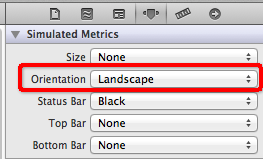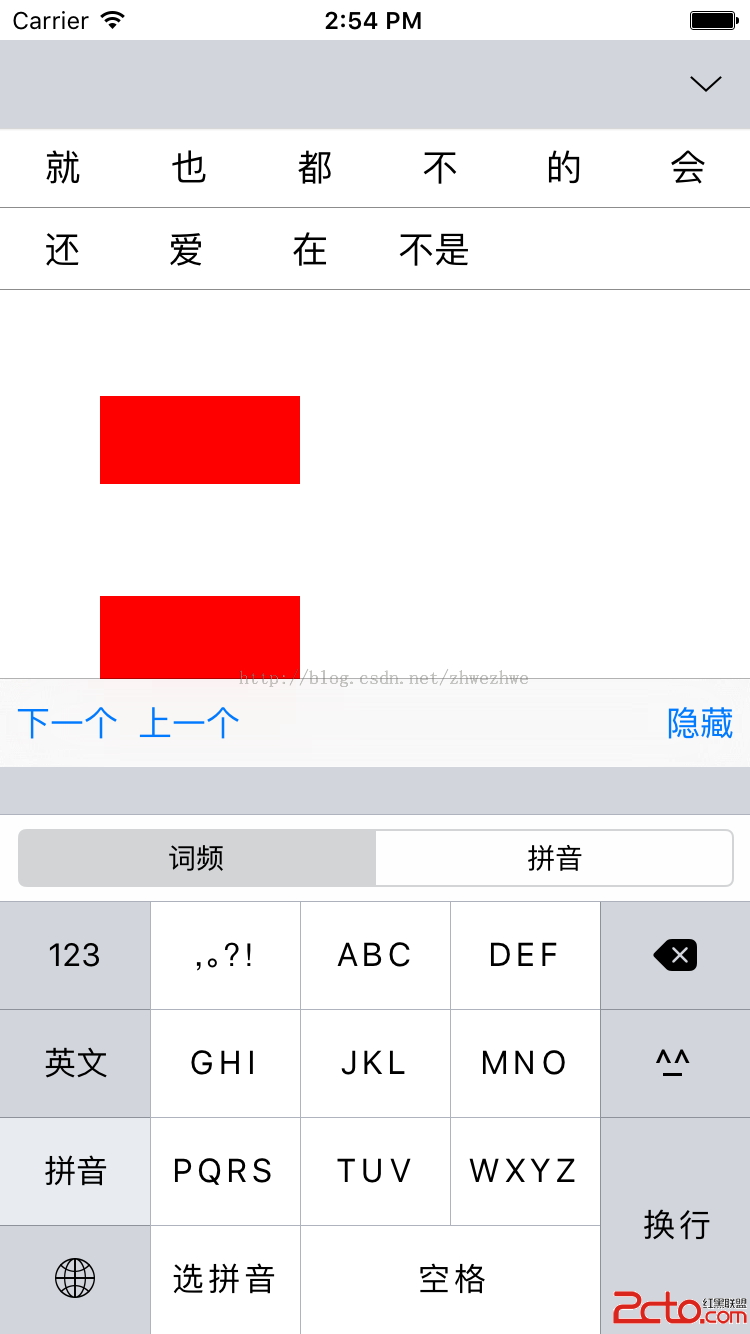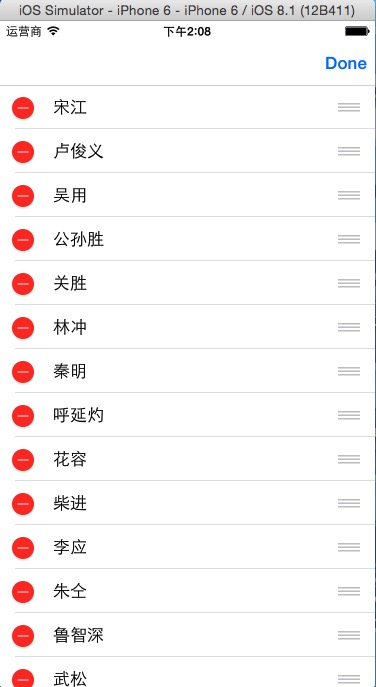iPhone開發--NSDate操作
NSDate
//得到當前的日期
NSDate *date = [NSDate date];
NSLog(@"date:%@",date);
//得到(24 * 60 * 60)即24小時之前的日期,dateWithTimeIntervalSinceNow:
NSDate *yesterday = [NSDate dateWithTimeIntervalSinceNow: -(24 * 60 * 60)];
NSLog(@"yesterday:%@",yesterday);
NSDateFormatter *formatter =[[[NSDateFormatter alloc] init] autorelease];
NSDate *date = [NSDate date];
[formatter setTimeStyle:NSDateFormatterMediumStyle];
NSCalendar *calendar = [[[NSCalendar alloc] initWithCalendarIdentifier:NSGregorianCalendar] autorelease];
NSDateComponents *comps = [[[NSDateComponents alloc] init] autorelease];
NSInteger unitFlags = NSYearCalendarUnit |
NSMonthCalendarUnit |
NSDayCalendarUnit |
NSWeekdayCalendarUnit |
NSHourCalendarUnit |
NSMinuteCalendarUnit |
NSSecondCalendarUnit;
//int week=0;
comps = [calendar components:unitFlags fromDate:date];
int week = [comps weekday];
int year=[comps year];
int month = [comps month];
int day = [comps day];
//[formatter setDateStyle:NSDateFormatterMediumStyle];
//This sets the label with the updated time.
int hour = [comps hour];
int min = [comps minute];
int sec = [comps second];
NSLog(@"week%d",week);
NSLog(@"year%d",year);
NSLog(@"month%d",month);
NSLog(@"day%d",day);
NSLog(@"hour%d",hour);
NSLog(@"min%d",min);
NSLog(@"sec%d",sec);
//得到毫秒
NSDateFormatter *dateFormatter = [[NSDateFormatter alloc] init];
[dateFormatter setDateStyle:NSDateFormatterMediumStyle];
[dateFormatter setTimeStyle:NSDateFormatterShortStyle];
//[dateFormatter setDateFormat:@"hh:mm:ss"]
[dateFormatter setDateFormat:@"yyyy-MM-dd HH:mm:ss.SSS"];
NSLog(@"Date%@", [dateFormatter stringFromDate:[NSDate date]]);
[dateFormatter release];
==========================================
方法一
NSDate* toDate1 = [ [ NSDate alloc] initWithString:@"2520-9-26 17:10:00 +0600" ];
NSTimeInterval distance = [ toDate1 timeIntervalSinceNow ];
NSTimeInterval iDat = distance / ( 86400 ) ;
NSLog( @" From now to %@ diff: %f ", [toDate1 description ], iDat );
[ toDate1 release ];
方法二
NSDate* toDate = [ [ NSDate alloc] initWithString:@"2009-9-29 0:0:00 +0600" ];
NSDate* startDate = [ [ NSDate alloc] init ];
NSCalendar* chineseClendar = [ [ NSCalendar alloc ] initWithCalendarIdentifier:NSGregorianCalendar ];
NSUInteger unitFlags = NSHourCalendarUnit | NSMinuteCalendarUnit |
NSSecondCalendarUnit | NSDayCalendarUnit
| NSMonthCalendarUnit | NSYearCalendarUnit;
NSDateComponents *cps = [ chineseClendar components:unitFlags fromDate:startDate toDate:toDate options:0];
NSInteger diffHour = [ cps hour ];
NSInteger diffMin = [ cps minute ];
NSInteger diffSec = [ cps second ];
NSInteger diffDay = [ cps day ];
NSInteger diffMon = [ cps month ];
NSInteger diffYear = [ cps year ];
NSLog( @" From Now to %@, diff: Years: %d Months: %d, Days; %d, Hours: %d, Mins:%d, sec:%d",
[toDate description], diffYear, diffMon, diffDay, diffHour, diffMin,diffSec );
[ toDate release ];
[ startDate release ];
[ chineseClendar release ];
NSDate
//得到當前的日期 www.2cto.com
NSDate *date = [NSDate date];
NSLog(@"date:%@",date);
//得到(24 * 60 * 60)即24小時之前的日期,dateWithTimeIntervalSinceNow:
NSDate *yesterday = [NSDate dateWithTimeIntervalSinceNow: -(24 * 60 * 60)];
NSLog(@"yesterday:%@",yesterday);
NSDateFormatter *formatter =[[[NSDateFormatter alloc] init] autorelease];
NSDate *date = [NSDate date];
[formatter setTimeStyle:NSDateFormatterMediumStyle];
NSCalendar *calendar = [[[NSCalendar alloc] initWithCalendarIdentifier:NSGregorianCalendar] autorelease];
NSDateComponents *comps = [[[NSDateComponents alloc] init] autorelease];
NSInteger unitFlags = NSYearCalendarUnit |
NSMonthCalendarUnit |
NSDayCalendarUnit |
NSWeekdayCalendarUnit |
NSHourCalendarUnit |
NSMinuteCalendarUnit |
NSSecondCalendarUnit;
//int week=0;
comps = [calendar components:unitFlags fromDate:date];
int week = [comps weekday];
int year=[comps year];
int month = [comps month];
int day = [comps day];
//[formatter setDateStyle:NSDateFormatterMediumStyle];
//This sets the label with the updated time.
int hour = [comps hour];
int min = [comps minute];
int sec = [comps second];
NSLog(@"week%d",week);
NSLog(@"year%d",year);
NSLog(@"month%d",month);
NSLog(@"day%d",day);
NSLog(@"hour%d",hour);
NSLog(@"min%d",min);
NSLog(@"sec%d",sec);
//得到毫秒
NSDateFormatter *dateFormatter = [[NSDateFormatter alloc] init];
[dateFormatter setDateStyle:NSDateFormatterMediumStyle];
[dateFormatter setTimeStyle:NSDateFormatterShortStyle];
//[dateFormatter setDateFormat:@"hh:mm:ss"]
[dateFormatter setDateFormat:@"yyyy-MM-dd HH:mm:ss.SSS"];
NSLog(@"Date%@", [dateFormatter stringFromDate:[NSDate date]]);
[dateFormatter release];
==========================================
方法一
NSDate* toDate1 = [ [ NSDate alloc] initWithString:@"2520-9-26 17:10:00 +0600" ];
NSTimeInterval distance = [ toDate1 timeIntervalSinceNow ];
NSTimeInterval iDat = distance / ( 86400 ) ;
NSLog( @" From now to %@ diff: %f ", [toDate1 description ], iDat );
[ toDate1 release ];
方法二
NSDate* toDate = [ [ NSDate alloc] initWithString:@"2009-9-29 0:0:00 +0600" ];
NSDate* startDate = [ [ NSDate alloc] init ];
NSCalendar* chineseClendar = [ [ NSCalendar alloc ] initWithCalendarIdentifier:NSGregorianCalendar ];
NSUInteger unitFlags = NSHourCalendarUnit | NSMinuteCalendarUnit |
NSSecondCalendarUnit | NSDayCalendarUnit
| NSMonthCalendarUnit | NSYearCalendarUnit;
NSDateComponents *cps = [ chineseClendar components:unitFlags fromDate:startDate toDate:toDate options:0];
NSInteger diffHour = [ cps hour ];
NSInteger diffMin = [ cps minute ];
NSInteger diffSec = [ cps second ];
NSInteger diffDay = [ cps day ];
NSInteger diffMon = [ cps month ];
NSInteger diffYear = [ cps year ];
NSLog( @" From Now to %@, diff: Years: %d Months: %d, Days; %d, Hours: %d, Mins:%d, sec:%d",
[toDate description], diffYear, diffMon, diffDay, diffHour, diffMin,diffSec );
[ toDate release ];
[ startDate release ];
[ chineseClendar release ];
摘自 zcl369369的專欄
- iOS獲得以後裝備型號等信息(全)包括iPhone7和iPhone7P
- xcode8提交ipa掉敗沒法構建版本成績的處理計劃
- Objective-C 代碼與Javascript 代碼互相挪用實例
- iOS開辟之UIPickerView完成城市選擇器的步調詳解
- iPhone/iPad開辟經由過程LocalNotification完成iOS准時當地推送功效
- iOS法式開辟之應用PlaceholderImageView完成優雅的圖片加載後果
- iOS Runntime 靜態添加類辦法並挪用-class_addMethod
- iOS開辟之用javascript挪用oc辦法而非url
- iOS App中挪用iPhone各類感應器的辦法總結
- 實例講授iOS中的UIPageViewController翻頁視圖掌握器
- IOS代碼筆記UIView的placeholder的後果
- iOS中應用JSPatch框架使Objective-C與JavaScript代碼交互
- iOS中治理剪切板的UIPasteboard粘貼板類用法詳解
- iOS App開辟中的UIPageControl分頁控件應用小結
- 詳解iOS App中UIPickerView轉動選擇欄的添加辦法




